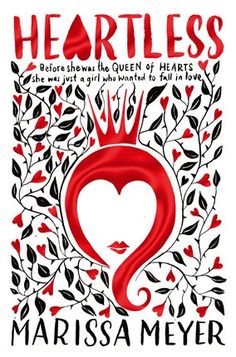This month’s Author Takeover comes from debut author and Potter enthusiast Melinda Salisbury. Her first book, The Sin Eater’s Daughter, was published last week in the UK and will be coming to the US on February 24. The Sin Eater’s Daughter is a book of intensity, misdirection, and passion; a world of mythology, poison, and politics; and the start of a series that will leave you counting the days until Book 2 is in your hands.
You can find Melinda on Twitter @AHintofMystery or at her website melindasalisbury.com, but be warned: She tweets a lot! (Sometimes in Parseltongue!)
On Purity and Power
At first glance, there’s little common ground between the Harry Potter series and The Sin Eater’s Daughter, beyond the very obvious surface similarities. Though both are fantasy, heavily involving castles, one is set in contemporary times, and one is pseudo medieval. Both have magic, though in The Sin Eater’s Daughter it’s more arcane and certainly a lot less fun. Both have characters with destinies they cannot seem to escape. But then, lots of books contain these themes and motifs. They’re popular – the idea of new strange worlds beyond our reach, the concept of a person having to sacrifice much of themselves for a greater good. Stories like these allow us to explore different ways of being, different realms and characteristics – honor, bravery, self-sacrifice – that our 21st-century Western lives don’t often call for in the same dramatic ways. One of the reasons I personally enjoy reading so much is because it’s the emotional equivalent of a dress-up box.
However, elements of the real world have a habit of seeping into fictional realms, and one of the most important of those, in both the Harry Potter series and The Sin Eater’s Daughter, is the belief that the right blood – pure blood – is essential for success and power.
Throughout Muggle history, pure-bloodedness in the ruling classes has been almost mandatory. Royal families across Europe spent lifetimes, centuries even, forming the right alliances, making sure above all else that the very purest, bluest blood was matched with its equal. Applying for Papal Dispensations so that first cousins could marry was common throughout medieval times, better to marry a cousin than a commoner. It has only been since modern discoveries about genetics and the importance of diversifying bloodlines that almost every degree of incest has become the stark taboo it is now. But even today, with this knowledge, a degree of inbreeding is something we’ve come to expect from the ruling classes. A case in point is that it was considered incredibly newsworthy that Prince William was dating, then set to marry, Kate Middleton, a commoner (in fact, their first child, Prince George, was referred to as the “Half-Blood Prince” by some media factions).
In the Harry Potter series we see a very similar state of affairs. We know that Slytherin House, home of those with great ambition and the desire for power, favors witches and wizards whose bloodlines are considered purest, which is to say non-Muggle. Thanks to new writing on Pottermore, we know about the Sacred Twenty-Eight, a definitive list of the most pure-blooded families, created to ensure that wizards and witches could arrange marriages without worrying about a Muggle taint. To certain factions, there is nothing more abhorrent than polluting a bloodline with unworthy blood. Marriages are agreed between the pure-blooded families while deviation from this status quo – such as Andromeda Black and Ted Tonks – is a cause for shame, disowning, and eventual persecution.
The same holds true, in the extreme, in the world of The Sin Eater’s Daughter.
In my world, we see royal brothers and sisters being married to each other to make sure that their offspring, who will in turn grow up and intermarry, have the maximum amount of royal blood in them. In the story the protagonist, Twylla, notes that it’s biologically a bad idea:
In the villages we knew the dangers of this; we’d seen the kittens and piglets born of those kind of unions, some deformed and blind, some spoiled and out of their minds. Though there’s a strength, of sorts, in preserving a bloodline, it comes at a cost, and the cost is high. Blood should be mixed if you want to avoid death and madness.
But even this, most extreme inbreeding, has antiquarian precedence. In Ancient Egypt – a time respected historically for being advanced in medicine, maths, and technology – brother/sister, uncle/niece, and even father/daughter and mother/son relationships were common among the ruling classes as a means of keeping the royal blood wholly royal. Several of the Egyptian Pharaohs married their siblings and had children with them; famous, lauded Tutankhamun married his half-sister Ankhesenamun, and he himself was the child of an incestuous union between Akhenaten and an unidentified sister. More famous were the unions of the Ptolemaic dynasty: beautiful, treacherous Cleopatra VII was married to her younger brother, Ptolemy XIII, and their parents had also been brother and sister. Rumours of Nero and his sister, of Cesare and Lucrezia Borgia… history is littered with the most famous and the most powerful marrying or bedding their literal nearest and dearest because, quite simply, no one else is good enough. And always, always, madness follows close behind.
Of course, in Harry Potter the inbreeding isn’t anywhere near as extreme, though we know from Dumbledore’s memories that generations of inbreeding left the last of the Gaunts mentally unstable and with disadvantageous physical characteristics. The Black family’s motto is Toujours Pur – Always Pure – and we know that many of the pure-blood relationships in the Potterverse are between second and third cousins. But the question is why? What is the perceived value in keeping the bloodlines “pure”?
In the world of Harry Potter, it’s about the belief for some that those with the ability to do magic are superior to those who cannot. So while even Muggle-born witches and wizards are technically better than Muggles, they are very much at the lower end of the magical caste system, with half-bloods considered more socially acceptable in certain circles. And of course, pure-bloods – those prized by the House of Slytherin – are the very best of all. They have the highest concentration of magic, surely, because pound for pound their blood is the most magical.
And the case is the same in the world of The Sin Eater’s Daughter. The royal family tries their hardest to keep the bloodline pure because they believe their blood is better. They believe their blood is divine, sacred because of their wealth and status, and that to mix that with common blood would dilute their power and importance. The Lormerian royal family believes that their blood is the very best, and even the slightest deviance from it can only occur if the gods make it clear it’s their wish –so when the queen is forced to marry her cousin in order to keep the throne, the court presumes the lack of purity in the union is why they bear no children because the gods don’t encourage relationships outside of the blood.
To have royal blood is to be distinct, to be special. It’s rare, conferred only on those deemed worthy, shared only with those of equal value. To have royal blood is seen as desirable; nobility means wealth, and wealth, in every world, means power. And if you’re a Malfoy or the queen of Lormere, power is the ultimate goal. Everything about having royal, pure blood makes you better simply because you have it. So while it might leave a bad taste in the mouth of commoners like us, to those on the throne, incest is the only possible way to ensure that the right kind of people sit there.
Melinda Salisbury
@AHintofMystery


